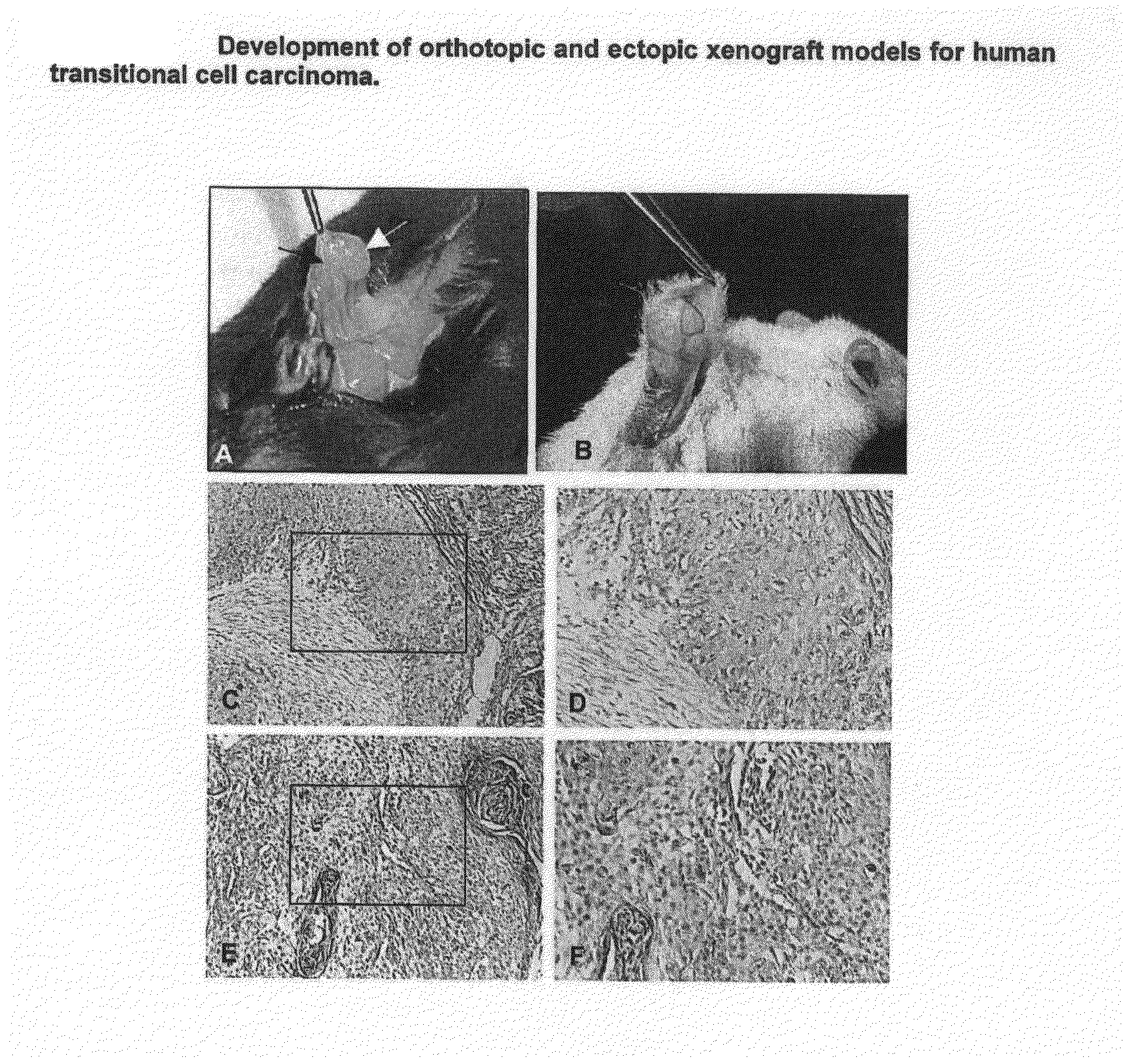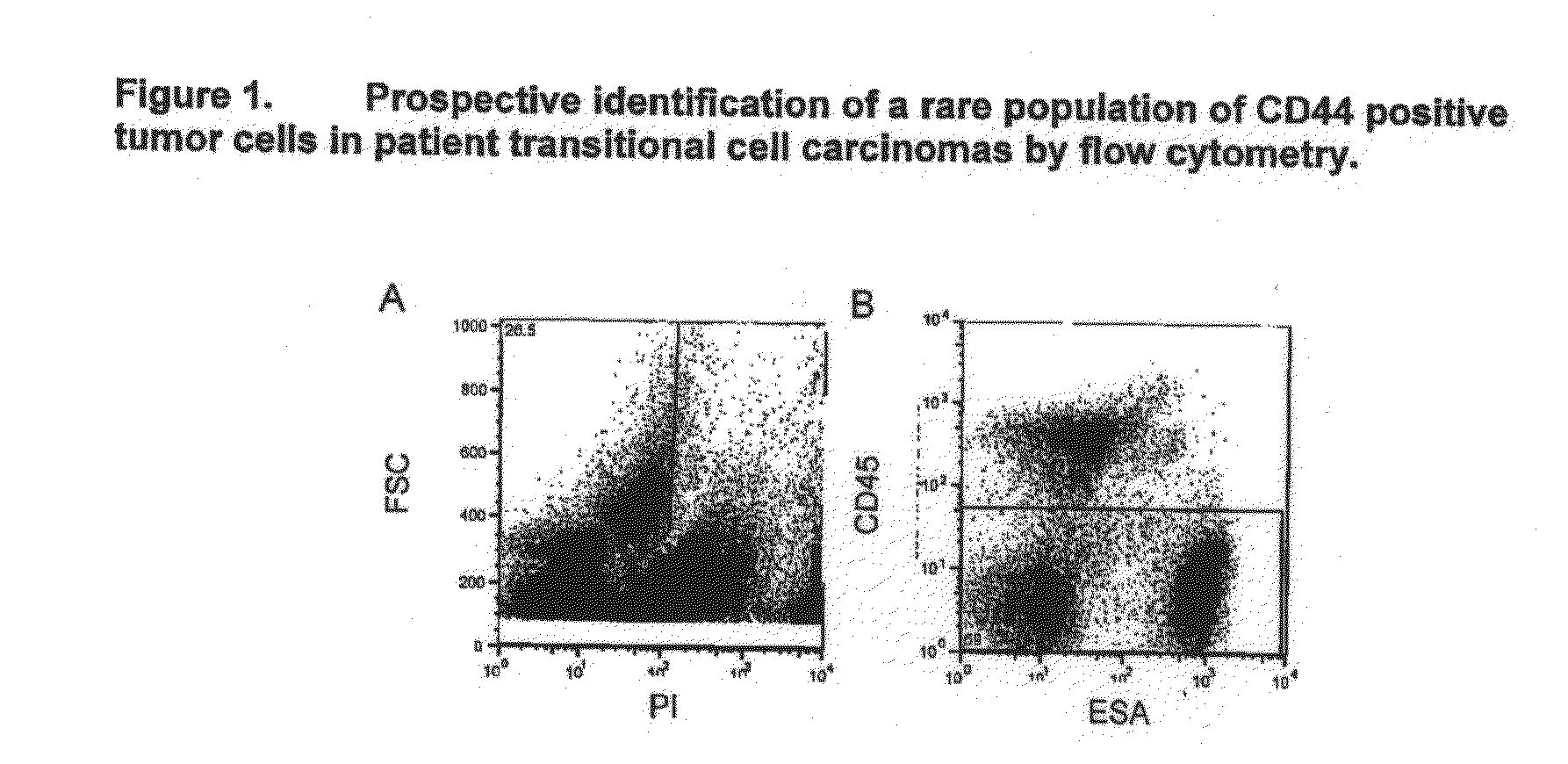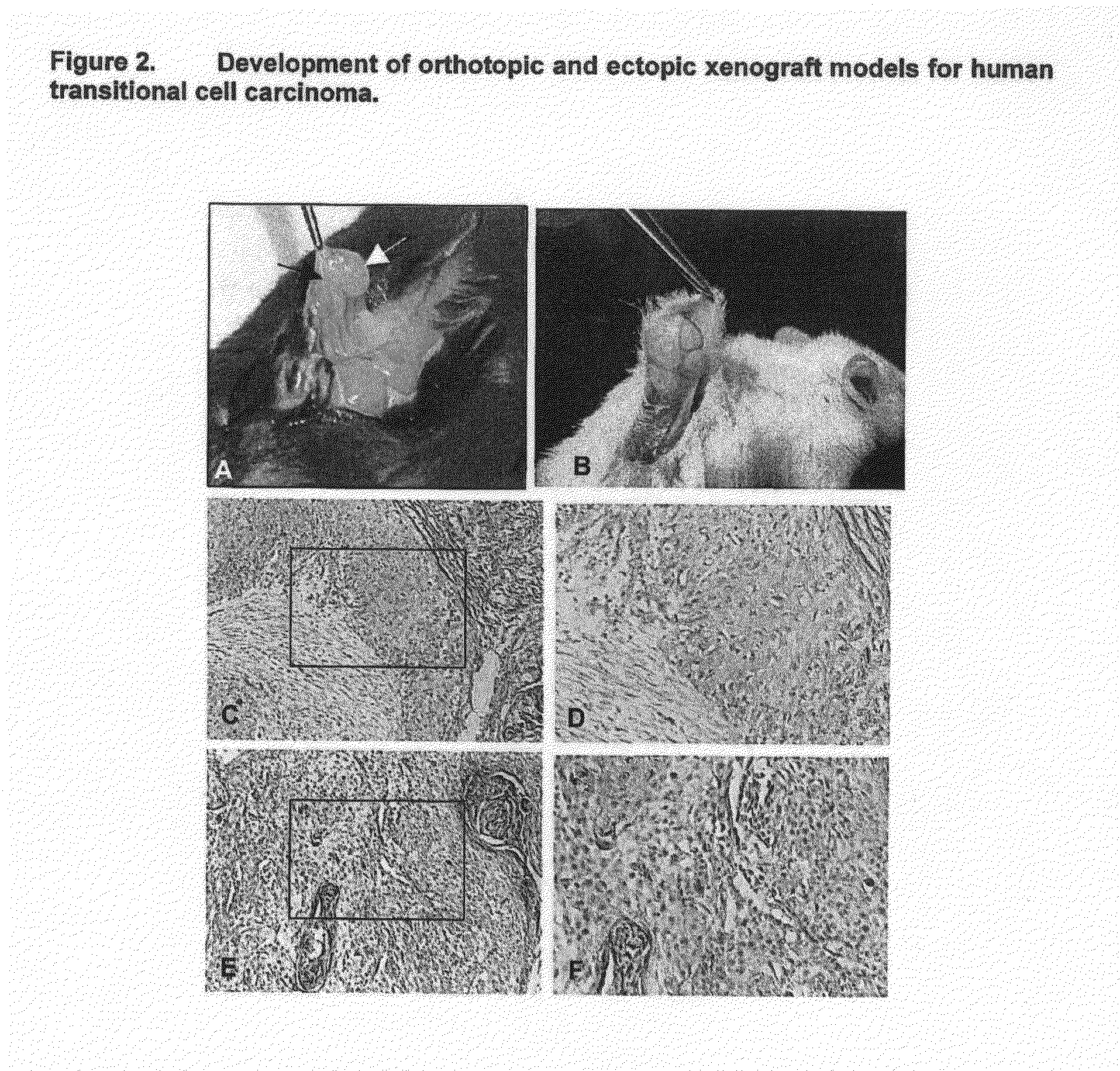Identification and isolation of transitional cell carcinoma stem cells
a technology of stem cells and transitional cell carcinoma, which is applied in the field of identification and isolation of transitional cell carcinoma stem cells, can solve problems such as metastatic diseas
- Summary
- Abstract
- Description
- Claims
- Application Information
AI Technical Summary
Benefits of technology
Problems solved by technology
Method used
Image
Examples
example 2
Molecular Profiling of Patient Bladder Cancers Reveals Heterogeneity in Active Self-Renewing Pathways and the Existence of Unique Tumor-Initiating Cells
[0089]Bladder cancer is a heterogeneous disease. Enzymatically dissociated patient bladder transitional cell carcinomas (TCCs) formed xenografts in the skin of immunocompromised mice; engraftment success closely correlated with their TNM staging. Through screening bladder TCC suspensions with CD44, CD133, CD24, CD49f, epithelial specific antigen, CD166 and CD105, we found a heterogeneity in the immunophenotype of the TCCs. CD44 was consistently expressed in 13 out of 14 bladder TCCs analyzed as a small subpopulation (3.4 to 36.3%) of total tumor cells. Five out of 13 bladder TCCs engrafted in vivo, and the CD44+ subpopulation consistently enriches for a tumor-initiating population; this CD44+ subset is 10-200 fold more tumorigenic than CD44− cells within the same tumor. We analyzed a tissue array containing more than 300 bladder TCCs...
PUM
 Login to View More
Login to View More Abstract
Description
Claims
Application Information
 Login to View More
Login to View More - R&D
- Intellectual Property
- Life Sciences
- Materials
- Tech Scout
- Unparalleled Data Quality
- Higher Quality Content
- 60% Fewer Hallucinations
Browse by: Latest US Patents, China's latest patents, Technical Efficacy Thesaurus, Application Domain, Technology Topic, Popular Technical Reports.
© 2025 PatSnap. All rights reserved.Legal|Privacy policy|Modern Slavery Act Transparency Statement|Sitemap|About US| Contact US: help@patsnap.com



